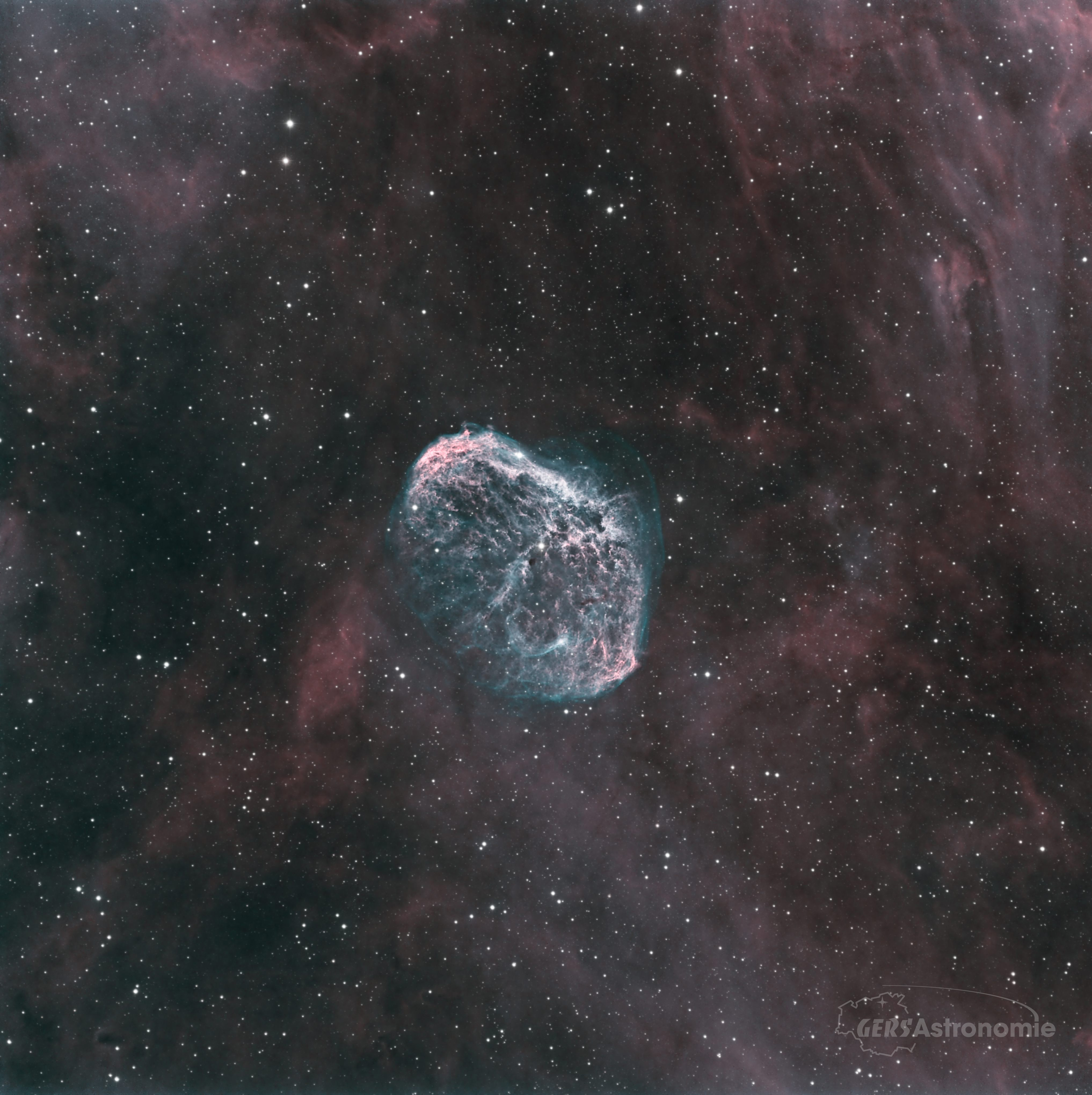Observation by Richard Francis: Crescent Nebula in HOO
Uploaded by
Observer
Richard Francis
Observed
2022 Nov 12 - 20:21
Uploaded
2024 Jun 05 - 20:25
Objects
Planetarium overlay
Constellation
Cygnus
Field centre
RA: 20h12m
Dec: +38°21'
Position angle: +0°11'
Field size
1°03' × 1°04'
Equipment
- Officina Stellare U-CRC360
- Paramount MEII
- FLI Kepler 4040
Exposure
about 20x300s in H and OIII
Location
La Romieu, SW France
Target name
Crescent Nebula
Title
Crescent Nebula in HOO
Copyright of all images and other observations submitted to the BAA remains with the owner of the work.
Reproduction of work by third parties is expressly forbidden without the consent of the copyright
holder. By submitting images to this online gallery, you grant the BAA permission to reproduce them in
any
of our publications.


